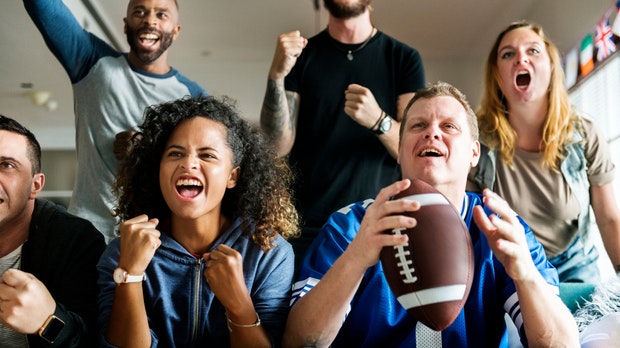With 800 million viewers worldwide, the Super Bowl is one of the most important marketing platforms in the world. Brands can use this environment for themselves beyond TV spots.
When the term Super Bowl comes up, most marketeers’ eyes light up. When the stars of the NFL fight for the “Vince Lombardi Trophy”, the annual battle for the best commercials in the world takes place during the commercial breaks. The all-American event thus became the stage for legendary spots like “The Force” from Volkswagen, the premiere of the Old Spice man or the grotesque “Game of Thrones meets Bud Light” mashup from Budweiser last year.
In the USA alone, around 100 million people sit in front of the television every year. In Germany in 2019 – in the middle of the night – 1.42 million viewers watched and got commercials tailored to Germany. Of course, the biggest single sporting event in the world also dominates Facebook , Instagram and Co.
So that brand managers benefit from this highly relevant environment, here are four tips that enable successful engagement:
1. Social rules, mobile wins
200 million Facebook and 150 million Instagram posts, likes and comments were generated on “Game Day” 2019 alone. Everything else is shared around the Super Bowl. If you want to be successful, you have to do your homework. Which hashtags work? Which groups do I tag for additional traffic? Are we more in the crowd with #superbowl # sb54 # superbowl2020 or are there special target groups that can be addressed more directly with specific hashtags? Can we perhaps address the topic regionally or locally?
Just as important: Do your own posts prevail over all content that is displayed under these hashtags? A sensational artwork and a concise style are as central as the story that brands tell through a series of posts. Videos optimized for mobile devices remain a must: More than 70 percent of viewers are on their smartphones at the same time.
2. Walk the whole distance
The Super Bowl traditionally takes place on the first Sunday in February. But the game itself is only the climax of a whole period of time. If you want to get the most out of your commitment, you start early and also plan the time after the event. Facebook, for example – this year for the first time – has been teasing a spot with Sylvester “Rocky” Stallone for months . Like many other brands, Olay and Verizon are also present on all channels with pre-teasers and teasers.
The most exciting approaches make the spot the heart of a communicative ecosystem that combines PR, teasers, landing pages and sales into one story, as for example Olay’s #makespaceforwomen campaign shows.
Planning over the entire distance is important even without a spot. Because the fans buy pizza and beer for the game beforehand and the big discussion begins the day after. Brands that become part of these conversations benefit the most from their engagement. This requires an orchestrated approach that plays out your own topics in a dramaturgically exciting way with many content assets.
3. The right content strategy
The “Big Game” is much more than sport. The Super Bowl is a party – a get-together. The topics that brands can authentically prove in this environment are correspondingly diverse. The Super Bowl meal, the right beer or the right snacks always deserve a story. But the field is bigger: where and with whom do people watch the game and what do they think, who wins? Depending on the brand, the training of the players is also a good focus. And the spots are always a topic of conversation – especially with female target groups.
Topics that are currently becoming attractive can best be identified as “trending topics” using social and search trends. Another option is to fill them with the right influencers. Micro-influencers are valued for their tendency towards greater credibility, their well-known role models bring additional reach.
4. Games to the game
The insurance company Progressive Insurance started a kind of bullshit bingo in 2016: users could use icons to tick off the predictable protagonists of the big Super Bowl spots such as celebrities, puppies or small ponies and win prizes. Progressive accompanied the user through all the spots – without switching one himself.
Gamification has a long tradition in the Super Bowl environment. Playful approaches make brands more or less ingenious part of the great Super Bowl experience. A few years ago, Verizon’s “Who’s gonna win” campaign illuminated the Empire State Building in the color of the favorite team that was voted live. In 2018 Esurance successfully maximized brand awareness with one million US dollars, which were raffled off for user tweets about the campaign. With mobile optimization, creative gamification approaches offer great potential to involve target groups in the long term – even without your own spot and ideally for the entire Super Bowl period.
And otherwise? The 77 commercial slots for this year have been sold out since November. And the fact that Donald Trump and Michael Bloomberg are running election campaigns this year in this traditionally rather apolitical environment should make the subject of content particularly exciting. All in all, the Super Bowl is a very interesting environment for brands that promises discussion potential, topics of conversation and increased brand engagement.
